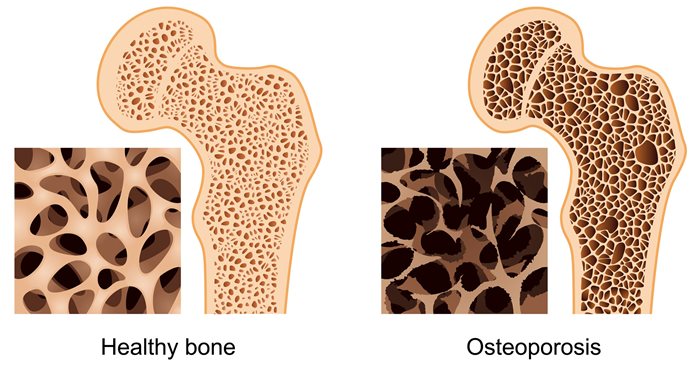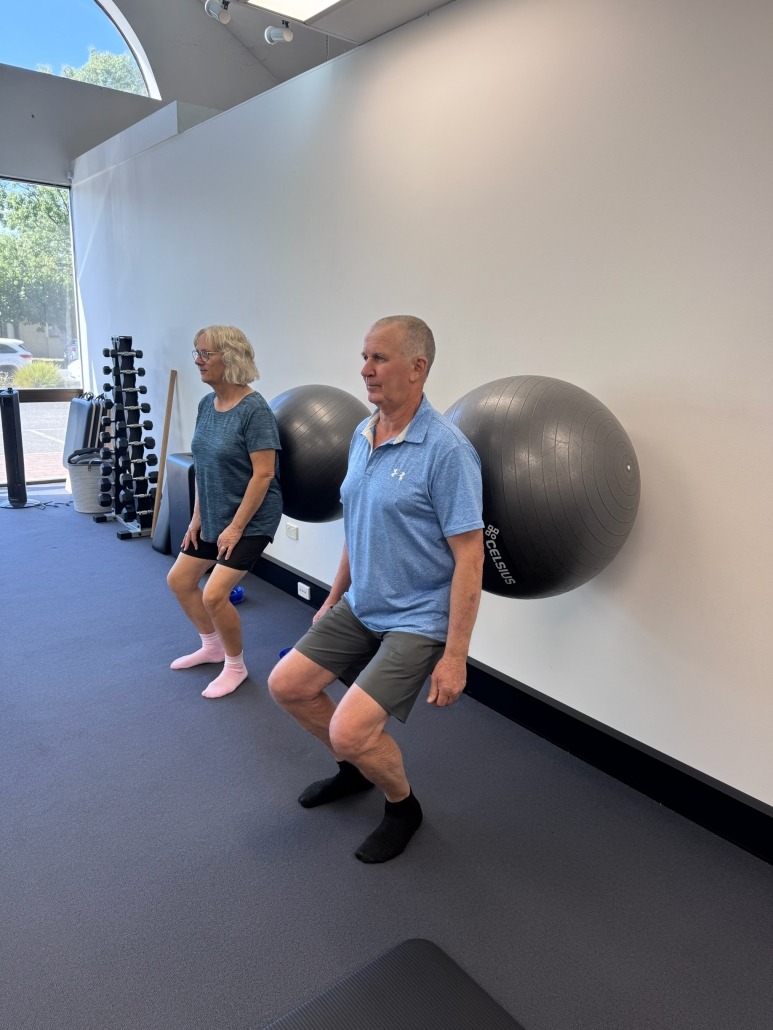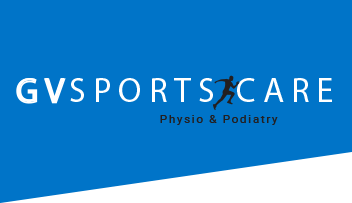Osteoporosis & menopause – why strength exercise is beneficial and how physiotherapy can help
What is osteoporosis?
Osteoporosis is a condition that affects your bone health, causing them to become weak and brittle. This leads to a higher risk of fractures (or breaks) than in normal bone.
Osteoporosis occurs when bones lose minerals, such as calcium, more quickly than the body can replace them, leading to a loss of bone density.
Osteoporosis is more common in older females due to reduced estrogen levels after menopause. Estrogen is a hormone that helps to regulate the menstrual cycle, but has an important role in preventing bone loss and keeping bones strong. When estrogen levels drop during menopause, bones break down faster than they can rebuild (this is a normal process, but bone rebuilding matches breakdown rates in healthy bones!).
Osteopaenia is a less severe form of osteoporosis, where the bone density is lower than normal.

What type of exercise should I do?
Exercise plays an important role in maintaining bone health throughout life. A combination of weightbearing, resistance and balance exercises are recommended for bone health.
- Weightbearing exercise: any activity where you move your body weight against gravity, typically while standing or with hands on the ground, this can be slow and controlled movements (e.g. squats, push ups) or movements where you land rapidly and firmly (e.g. jumping, jogging, skipping, stair climbing, impact sports).
- Resistance training: the movement of weight (e.g. weights, resistance bands), this training should progress in intensity over time.
- Balance training: exercises that challenge your balance, which are very important in preventing falls as we age.
How does this improve bone density?
Weightbearing and resistance exercises improve bone density by applying controlled stress to the bones, triggering the body’s natural bone-building process. These exercises encourage the bones to become stronger and denser, which is crucial for people with osteoporosis.


Does walking count?
Research has demonstrated that when it comes to our bone health, not all exercise is equal.
Bones benefit when a certain amount of impact or strain is placed on them – which cannot be achieved by walking alone.
Walking is a great form of exercise for overall health; however, it primarily provides cardiovascular benefits rather than directly improving bone strength. Weightbearing and resistance training is the most effective way to maintain and improve bone density in individuals with osteoporosis.
“I’m worried about injuring myself by starting a new exercise program” – How can physio help?
Starting new exercise can be daunting, especially if you are concerned about injuring yourself. It is recommended to consult a physiotherapist for guidance on the best type of exercise for you.
Physiotherapists are trained healthcare professionals who specialise in diagnosing and treating musculoskeletal disorders, improving physical function and promoting health through exercise.
Physiotherapists have expertise in prescribing tailored exercise for people with osteoporosis and can accommodate for other medical or physical limitations. This includes considering pre-existing injuries, fitness levels and past exercise experience.
The good news is it’s never too late to start exercising!
Additional benefits of strength exercise:
Strength exercise provides several other benefits including:
- Increased muscular strength
- Improved balance and coordination
- Improved posture
- Pain management
- Improved mobility
- Mental health benefits
- Improved cardiovascular health
- Reduced risk of falling (reduced risk of bone fracture or other injury)
- Easier ability to get on and off the floor – easier to play with the grandkids!
References
Healthy Bones Australia. (2025). About osteoporosis. https://healthybonesaustralia.org.au/your-bone-health/about-osteoporosis/
Healthy Bones Australia. (2024). Exercise and bone health. https://healthybonesaustralia.org.au/wp-content/uploads/2024/11/hba-fact-sheet-exercise-v2-11-24-digital.pdf
Image sources:
https://msfocus.org/Magazine/Magazine-Items/Posted/Prevent-Osteoporosis-with-6-Bone-Health-Boosters
– Zoe Boldiston
Physiotherapist Shepparton





Leave a Reply
Want to join the discussion?Feel free to contribute!